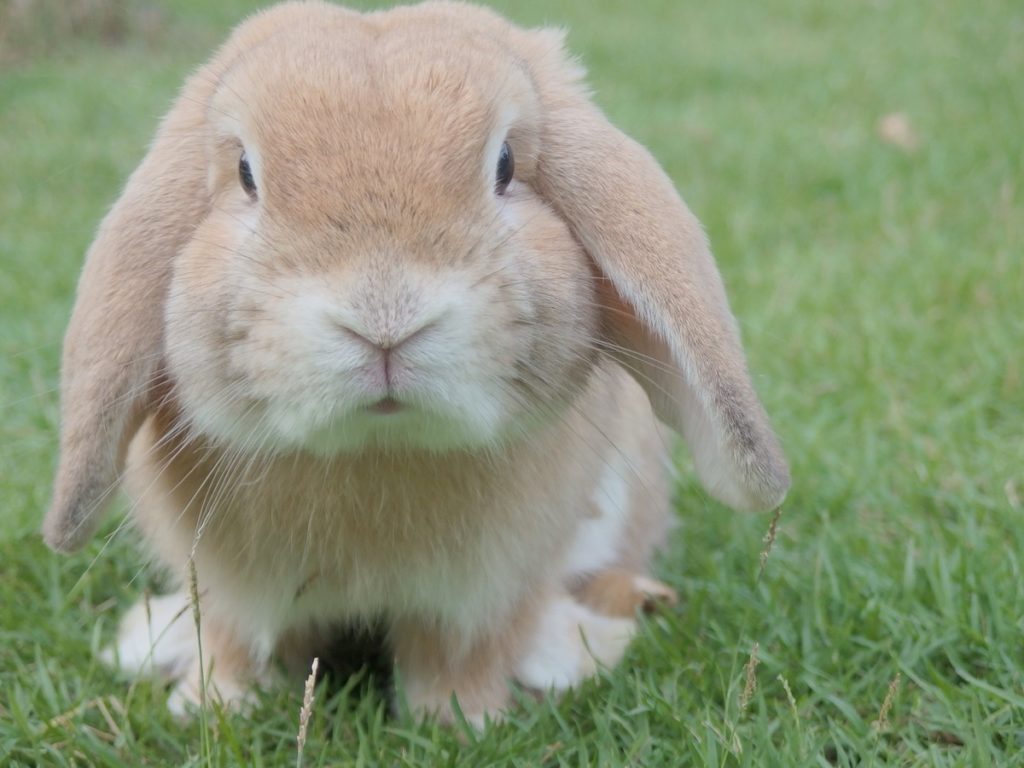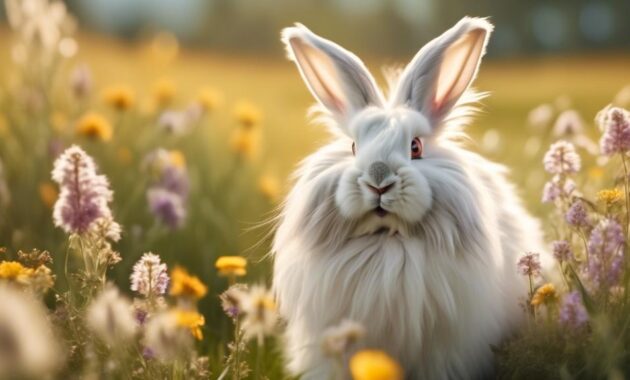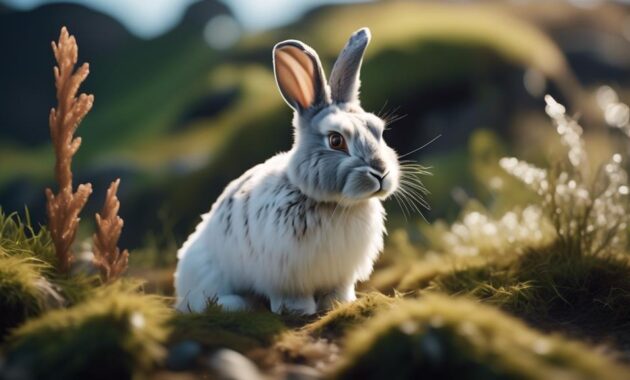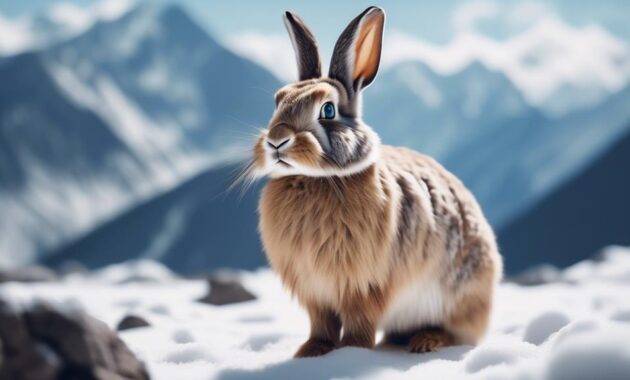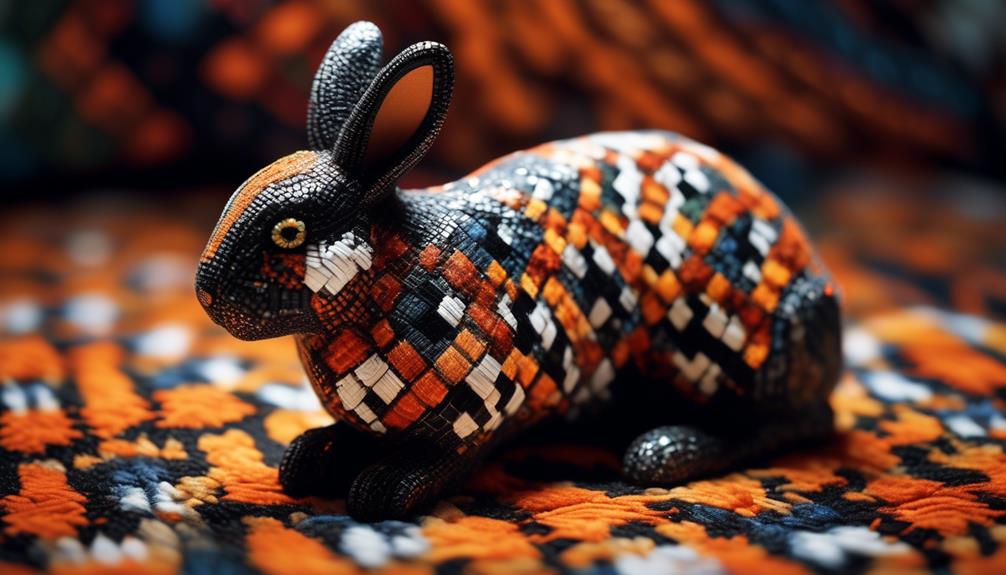
They say that beauty is in the eye of the beholder, and when it comes to the Rare Rhinelander Rabbit, it's hard not to be captivated by its unique and colorful markings.
But what makes this breed truly special? Well, buckle up and get ready to discover the fascinating world of the Rhinelander Rabbit, as we delve into their origin, temperament, and care requirements.
From their stunning coat to their friendly nature, there's a lot to uncover about these extraordinary rabbits.
So, are you ready to embark on this journey and uncover the secrets of the Rare Rhinelander Rabbit?
Key Takeaways
- The Rhinelander Rabbit is a unique breed with colorful markings, including two different colored markings on a white base coat.
- It originated in Germany and was brought to the United States in 1923, and was recognized as a breed by the American Rabbit Breeders Association in 1975.
- The Rhinelander Rabbit has a friendly and gentle temperament, making it suitable for singles, seniors, families with children, and first-time owners.
- Care requirements for this breed include a diet consisting of hay, pellets, fruits, vegetables, and leafy greens, regular spot-cleaning and bedding replacement, and regular veterinary check-ups to prevent health issues like flystrike.
Rhinelander Rabbit Breed Information
Rhinelander Rabbit breed information includes details about their weight, lifespan, body shape, and suitability for different types of owners and living environments.
These rabbits typically weigh between 6.5 and 10 pounds, and they have a lifespan of 5 to 8 years.
They have a full arch body shape, which gives them a distinctive appearance.
Rhinelanders are well-suited for a variety of owners, including singles, seniors, and families with children.
They can thrive in both houses and apartments, as well as indoor and outdoor environments.
In terms of temperament, Rhinelanders are friendly, alert, gentle, and docile.
Whether you're a first-time owner or an experienced rabbit enthusiast, the Rhinelander Rabbit can make a wonderful addition to your home.
Rhinelander Rabbit Breed History/Origin
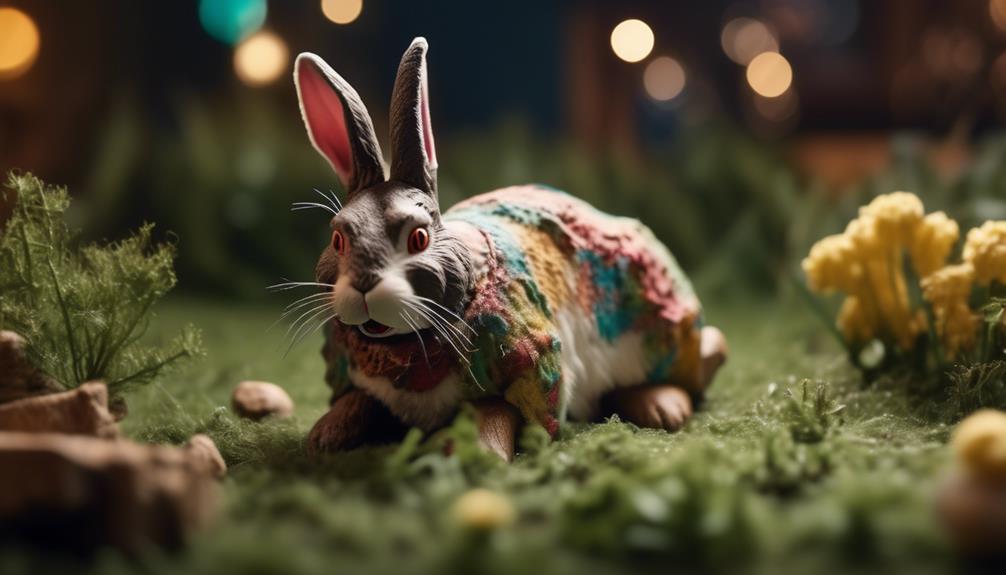
Now let's explore the fascinating origins of the Rhinelander Rabbit breed, tracing its roots back to its creation in Germany.
The breed originated in Grevenbroich, North Rhine-Westphalia, Germany, and was created by crossing a Japanese buck with a gray-checkered doe. It was accepted as a breed in Germany in 1905 and was brought to the United States in 1923.
The American Rabbit Breeders Association recognized the Rhinelander Rabbit breed in 1975. This breed is known for its large size, full-arch body shape, and long ears. It has a white base coat with colorful markings on its ears, eye circles, nose, and cheek spot.
The Rhinelander Rabbit is comparable to breeds such as the Harlequin Rabbit and the Checkered Giant Rabbit.
Overall Description
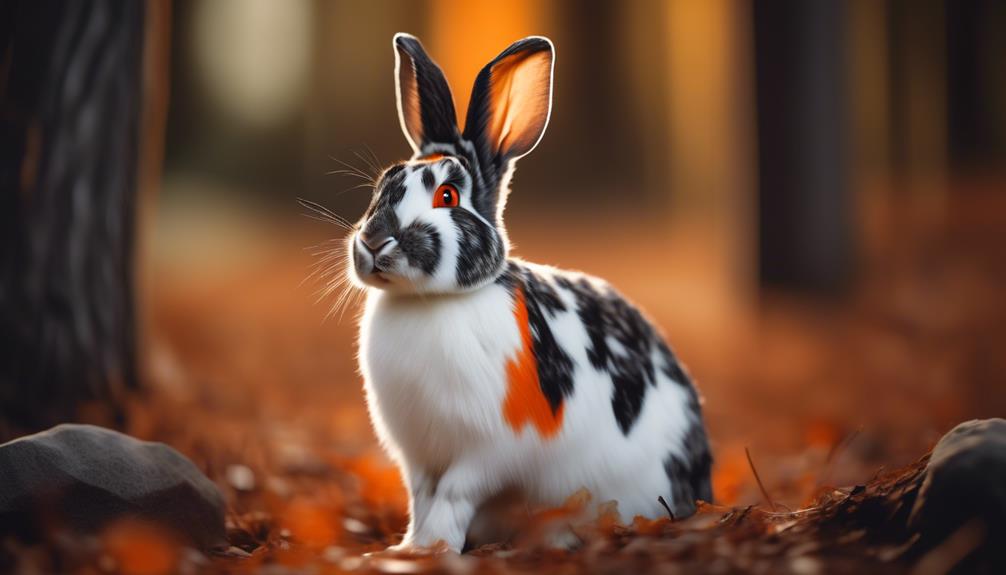
With its large size, full-arch body shape, and distinctive long ears, the Rhinelander Rabbit stands out among other breeds. Weighing between 6.5-10 lbs, this rabbit boasts a unique appearance that's sure to catch your eye.
Its full-arch body shape, with long limbs, gives it an elegant and graceful appearance. The Rhinelander Rabbit also has long ears, measuring no longer than 4 3/4 inches, which adds to its charm.
Its white base coat is adorned with two different colored markings, creating a striking and colorful pattern. Comparable to breeds like the Harlequin Rabbit and the Checkered Giant Rabbit, the Rhinelander is truly a breed like no other.
Coat and Colors
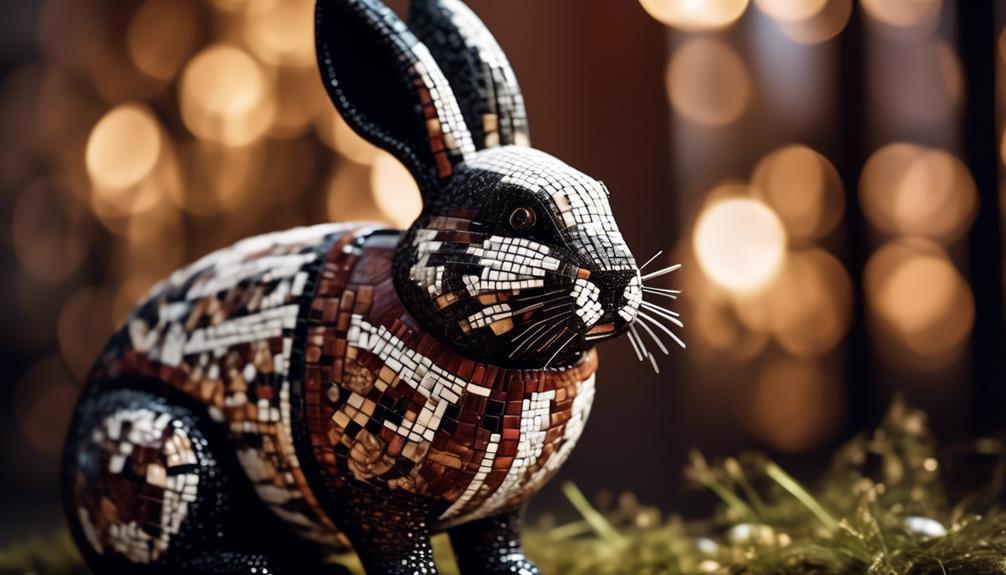
The Rhinelander Rabbit's coat is soft, short, and dense, making it a pleasure to touch. Its fur requires brushing once every other week during shedding periods.
The base coat is white, and it has colored markings on its ears, eye circles, nose, and cheek spot. Show-worthy Rhinelanders have 2-10 spots on their flanks and hindquarters.
The colors of the markings can be orange/yellow and black, or fawn and blue since 2012. Taking care of the Rhinelander Rabbit's coat and colors is essential to maintain its beauty.
Regular grooming and attention to its markings will ensure that this unique breed continues to stand out.
Care Requirements and Health
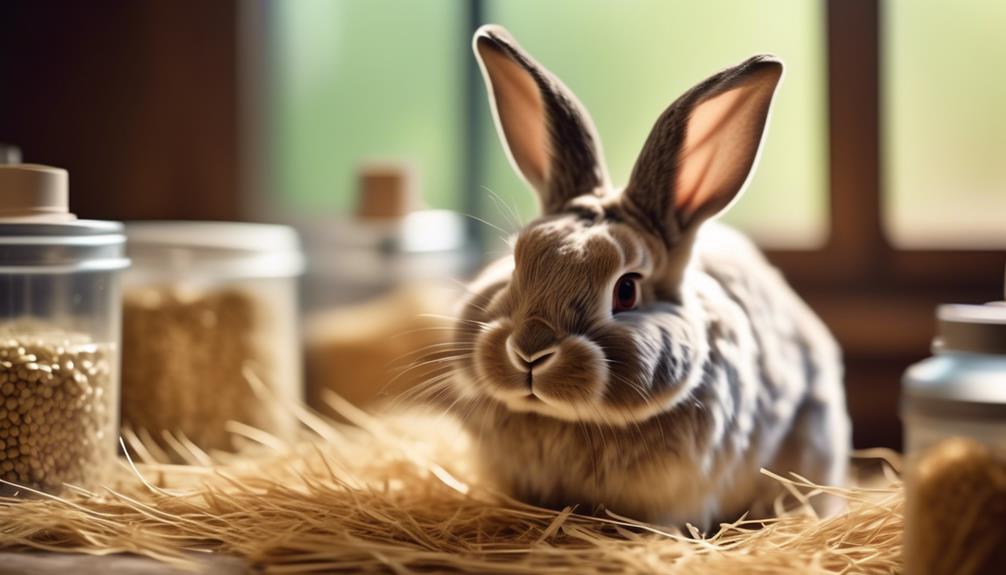
To ensure the Rhinelander Rabbit's overall well-being, it's important to understand its care requirements and maintain its health.
The Rhinelander Rabbit's diet should consist of 70% hay, pellets, fruits, vegetables, and leafy greens.
It's recommended to keep them in indoor enclosures to protect their health, although they can also be kept outdoors.
Regular spot-cleaning and bedding replacement are necessary for indoor enclosures.
Their teeth should be naturally worn down with a hay-based diet, but regular veterinary check-ups are still recommended.
It's important to prevent flystrike by keeping their cages clean.
Weight and Lifespan
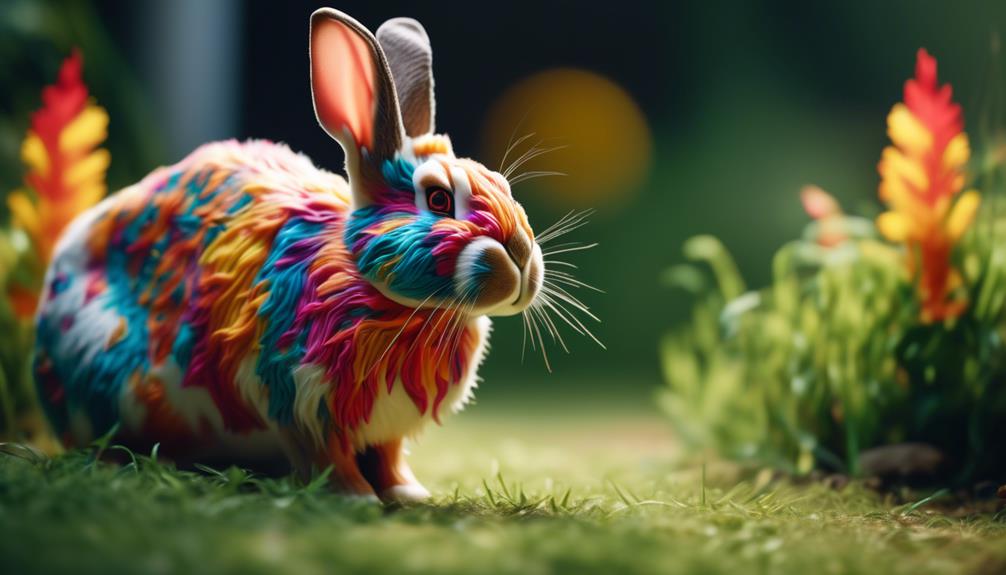
Rhinelander Rabbits typically weigh between 6.5 and 10 pounds and have a lifespan of 5 to 8 years.
When it comes to the weight and lifespan of these unique rabbits, here are a few things to consider:
- They're the perfect size for cuddling and holding in your arms, adding a sense of warmth and companionship to your life.
- With their relatively short lifespan, every moment spent with a Rhinelander Rabbit becomes even more precious, reminding you to cherish the time you have together.
- Their weight makes them easy to handle and care for, allowing you to form a strong bond with these adorable creatures.
- The lifespan of 5 to 8 years provides an opportunity to create lasting memories and experiences with your furry friend.
Knowing their weight and lifespan can help you plan and provide the best care possible, ensuring their well-being and happiness throughout their lives.
Body Shape and Size
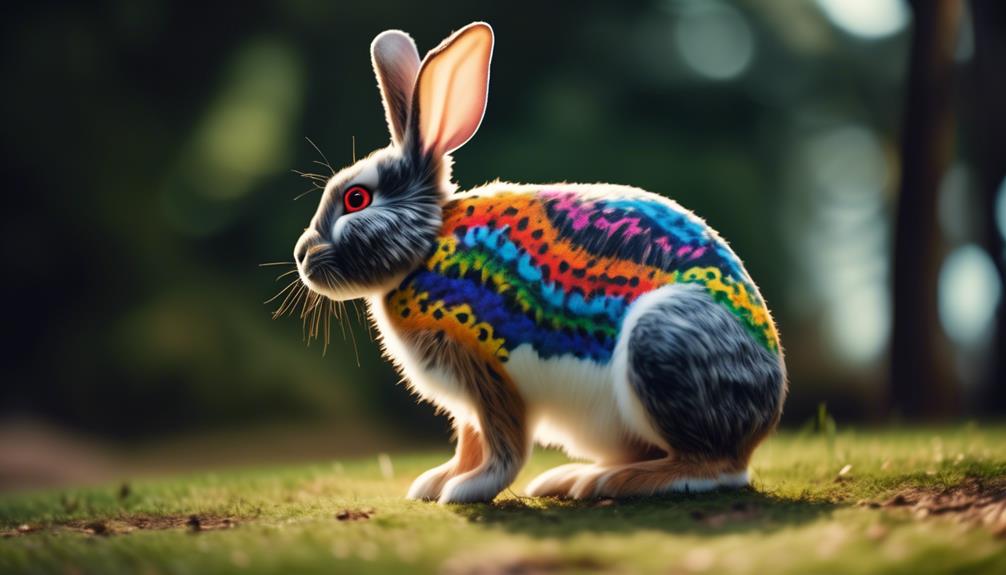
With its distinctive full-arch body shape and size, the Rhinelander Rabbit stands out among other breeds. This breed is known for its large size, weighing between 6.5 to 10 pounds. Its body features long limbs and a full-arch shape, giving it a unique appearance. To help you visualize the size of a Rhinelander Rabbit, here's a table comparing its weight to common household objects:
| Rhinelander Rabbit Weight | Household Object |
|---|---|
| 6.5 pounds | A gallon of milk |
| 8 pounds | A bowling ball |
| 10 pounds | A small watermelon |
As you can see, the Rhinelander Rabbit is larger than you might expect. Its full-arch body shape adds to its charm and makes it a standout breed among rabbit enthusiasts.
Temperament and Suitability
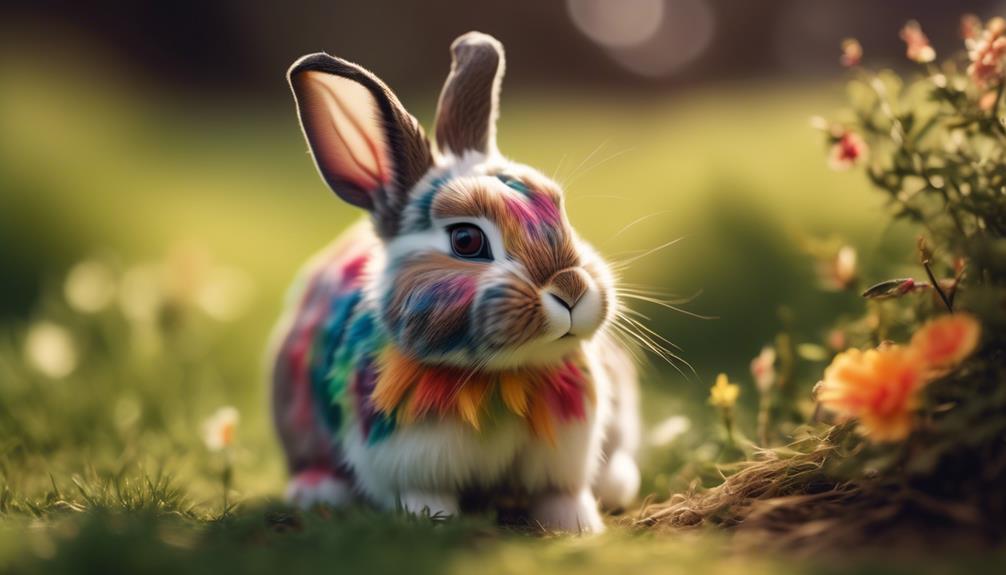
The Rhinelander Rabbit's temperament and suitability make it a popular choice for a variety of owners. Here are five reasons why this breed is loved by many:
- Friendly nature: Rhinelanders are known for their friendly and sociable personalities. They enjoy being around people and are great companions.
- Alertness: These rabbits are naturally alert and aware of their surroundings. They make excellent watch animals and can provide a sense of security.
- Gentle demeanor: Rhinelanders are gentle and docile, making them suitable for households with children. They're patient and tolerant, allowing for gentle handling.
- Adaptability: Whether you live in an apartment or have a spacious backyard, Rhinelanders can adapt to various living environments. They can be kept indoors or outdoors.
- First-time owner friendly: If you're a first-time rabbit owner, the Rhinelander is a great choice. They're easy to care for and require minimal grooming.
With their friendly nature, adaptability, and gentle demeanor, Rhinelanders make wonderful pets for a wide range of owners.
Origins and Recognition
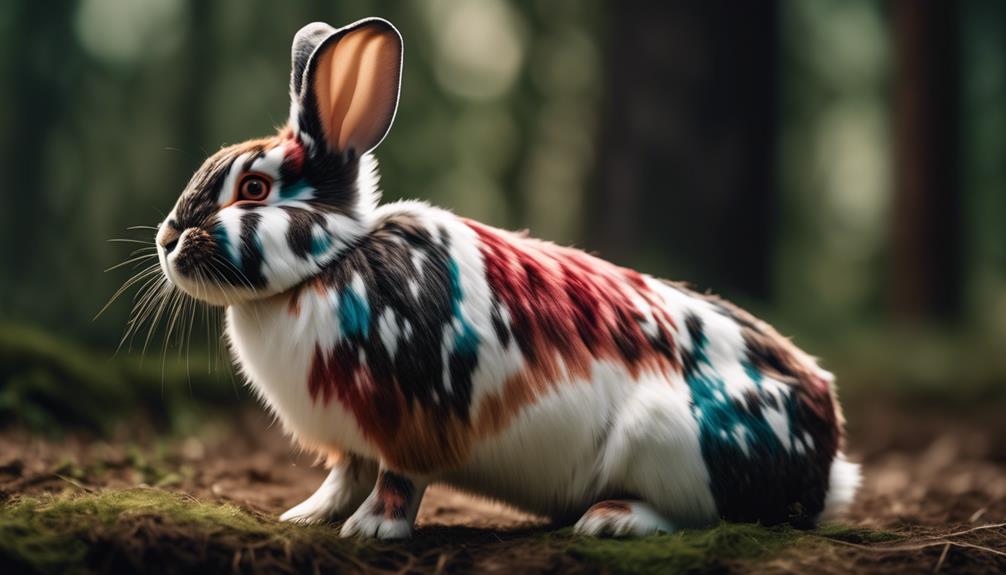
If you're interested in learning about the origins and recognition of the Rhinelander Rabbit breed, let's take a closer look at its fascinating history and how it became recognized as a distinct breed.
The Rhinelander Rabbit originated in Grevenbroch, North Rhine-Westphalia, Germany. It was created by crossing a Japanese buck with a gray-checkered doe. In 1905, it was accepted as a breed in Germany.
The breed was brought to the United States in 1923, and it was recognized by the American Rabbit Breeders Association in 1975. This recognition solidified the Rhinelander Rabbit's place as a unique and fascinating breed with its distinctive white base coat and colorful markings.
Unique Markings and Color Patterns
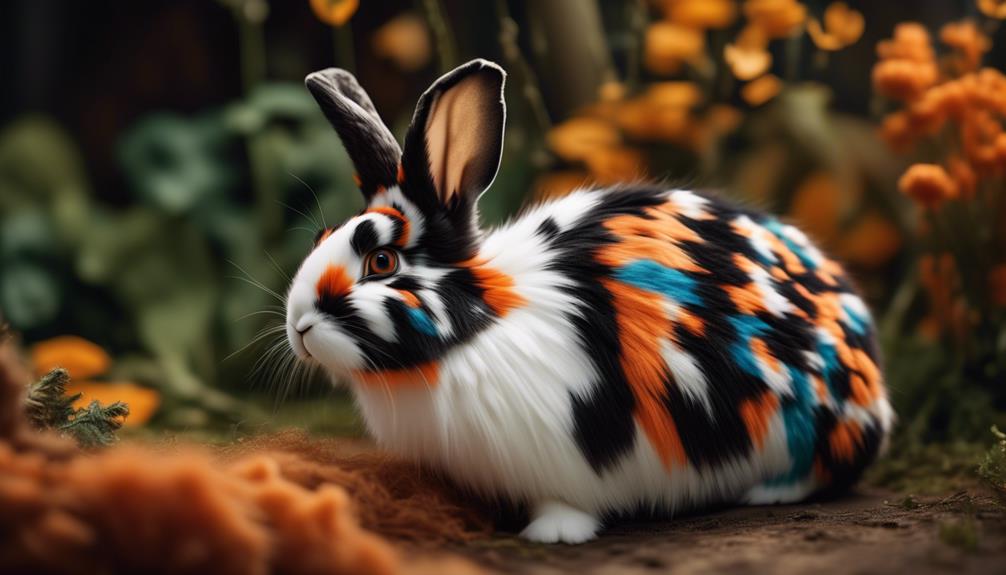
To understand the unique markings and color patterns of the Rhinelander Rabbit, take a closer look at its distinctive white base coat and the vibrant colors that adorn its ears, eyes, nose, and cheeks. These eye-catching features are sure to captivate anyone who lays eyes on this rare breed.
Imagine the joy and wonder of seeing a Rhinelander Rabbit with its striking orange/yellow and black markings or its fawn and blue spots. Picture the delight of observing its long ears, measuring no longer than 4 3/4 inches, with intricate patterns that make each rabbit truly one-of-a-kind.
Envision the happiness that comes from witnessing the beauty of this show-worthy breed, with its 2-10 spots on its flanks and hindquarters. Prepare to be amazed by the extraordinary color combinations that make the Rhinelander Rabbit a true standout in the world of rabbits.
Grooming and Maintenance
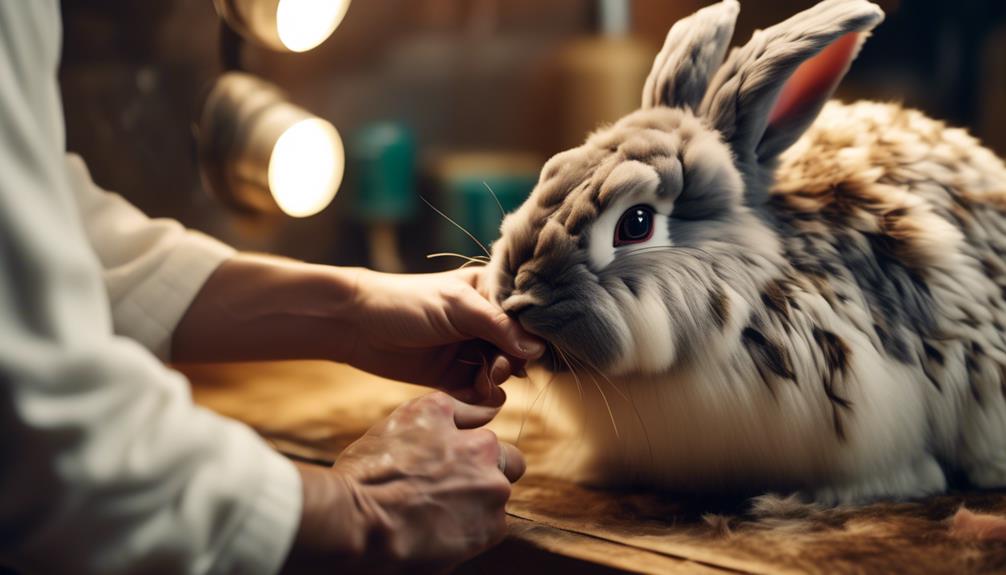
Regular grooming and maintenance of the Rhinelander Rabbit is essential to keep its soft fur in optimal condition and ensure its overall well-being. The Rhinelander Rabbit has a short and dense coat that requires brushing once every other week during shedding periods. This helps to remove loose fur and prevent matting.
When grooming, pay special attention to the colored markings on the ears, eye circles, nose, and cheek spot, as these areas can accumulate dirt and debris.
Additionally, it's important to keep the rabbit's enclosure clean to prevent the buildup of waste and bacteria. Regular spot-cleaning and bedding replacement are recommended for indoor enclosures.
Lastly, ensure that the rabbit's teeth are naturally worn down by providing a diet consisting of 70% hay, pellets, fruits, vegetables, and leafy greens.
Housing Options and Indoor Preference
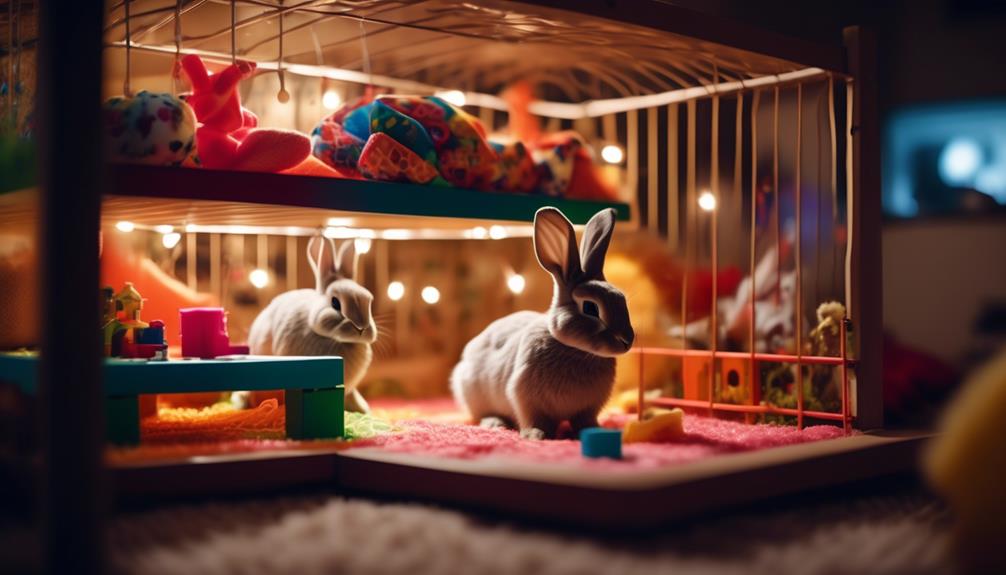
To ensure the optimal well-being of your Rhinelander Rabbit, let's now explore the best housing options and why indoor preference is beneficial for this breed.
- Indoor housing is recommended for Rhinelander Rabbits due to their delicate markings and unique coloration. Keeping them indoors protects them from harsh weather conditions and potential predators.
- Indoor housing allows for better temperature control, ensuring that your rabbit stays comfortable year-round. It also reduces the risk of exposure to parasites, diseases, and other outdoor hazards.
- Furthermore, indoor housing provides you with the opportunity to bond and interact with your Rhinelander Rabbit on a daily basis, promoting a strong and loving relationship.
Diet and Health Considerations
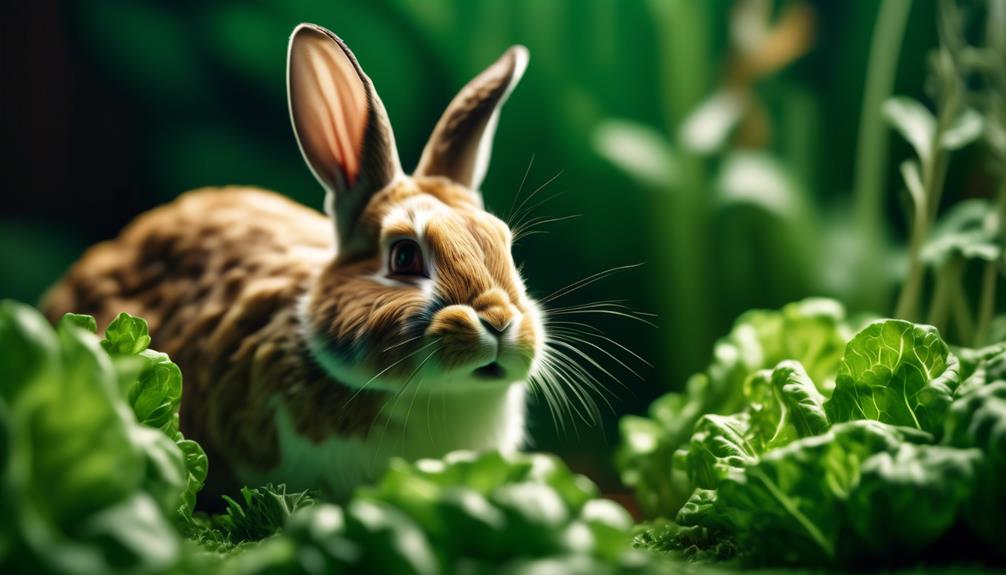
For optimal health and well-being of your Rhinelander Rabbit, it's important to consider their diet and health requirements.
A balanced diet is crucial for their overall health. Make sure to provide them with a diet that consists of 70% hay, pellets, fruits, vegetables, and leafy greens. Hay is especially important as it helps wear down their teeth naturally.
It's also recommended to keep your Rhinelander Rabbit indoors for better health outcomes. Regular spot-cleaning and bedding replacement are necessary for indoor enclosures. Additionally, it's important to prevent flystrike by keeping their cages clean.
Regular veterinary check-ups are also recommended to ensure the overall health and well-being of your Rhinelander Rabbit.
Frequently Asked Questions
Are Rhinelander Rabbits Good for First-Time Rabbit Owners?
Yes, Rhinelander rabbits are good for first-time rabbit owners. They have a friendly and gentle temperament, making them easy to handle. With proper care and attention, they can be a great addition to any family.
Can Rhinelander Rabbits Be Kept as Outdoor Pets?
Yes, Rhinelander rabbits can be kept as outdoor pets. They are adaptable to different environments and can thrive outdoors, as long as they have a secure enclosure and protection from extreme weather conditions.
How Often Should Rhinelander Rabbits Have Veterinary Check-Ups?
You should take your Rhinelander rabbit for regular veterinary check-ups to ensure its health and well-being. It is recommended to schedule these check-ups on a regular basis to prevent any potential health issues.
Do Rhinelander Rabbits Have Any Specific Health Concerns?
Rhinelander rabbits don't have any specific health concerns, but regular veterinary check-ups are recommended to ensure their overall well-being. Keep their cages clean to prevent flystrike and make sure their teeth are naturally worn down with a hay-based diet.
What Are the Differences Between Rhinelander Rabbits and Harlequin Rabbits?
The differences between Rhinelander rabbits and Harlequin rabbits are their markings and colors. Rhinelanders have a white base coat with two different colored markings, while Harlequins have a base color with patches of a contrasting color.
What Makes the Rhinelander Rabbit’s Colorful Markings Unique Compared to the Shimmering Creme D’argent Rabbit’s Enduring Elegance?
The Rhinelander rabbit’s colorful markings are truly unique compared to the shimmering creme d’argent rabbit‘s enduring elegance. While the creme d’argent rabbit boasts a captivating shimmer, the Rhinelander rabbit’s intricate and multi-colored coat sets it apart, making it a standout breed in the rabbit world.
Conclusion
In conclusion, if you're searching for a one-of-a-kind rabbit breed with vibrant and eye-catching markings, look no further than the Rare Rhinelander Rabbit.
With its friendly temperament and suitability for both indoor and outdoor living, this breed is a fantastic addition to any family.
Whether you're a single person, a senior, or have children, the Rhinelander Rabbit's unique colors and gentle nature make it the perfect choice for a furry companion.
Don't miss out on the opportunity to bring this rare and beautiful rabbit into your home!

